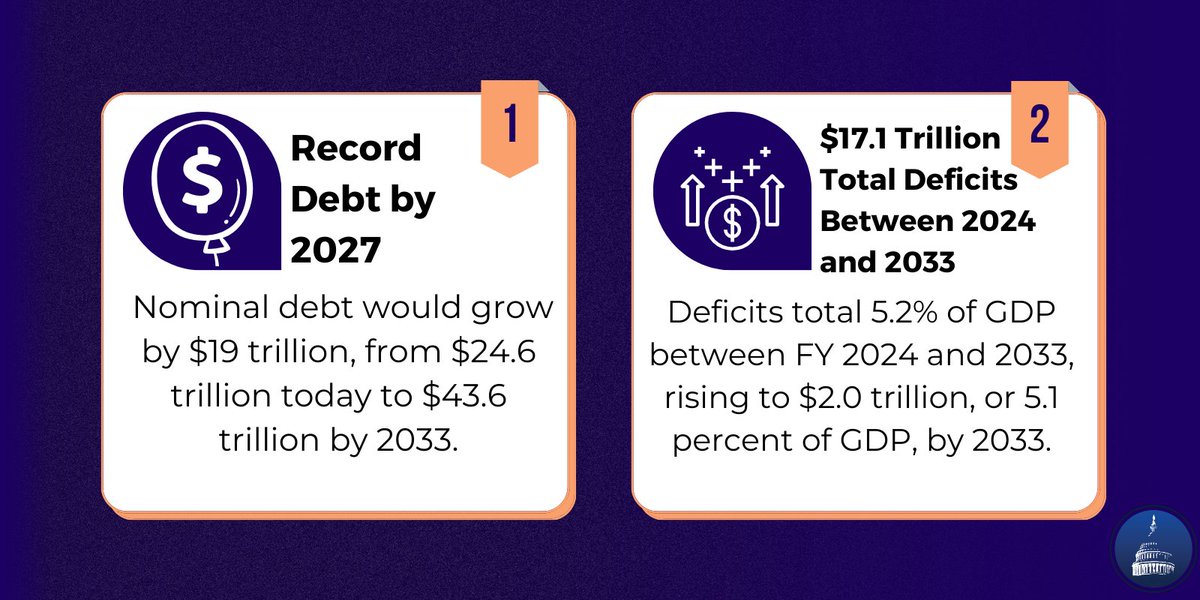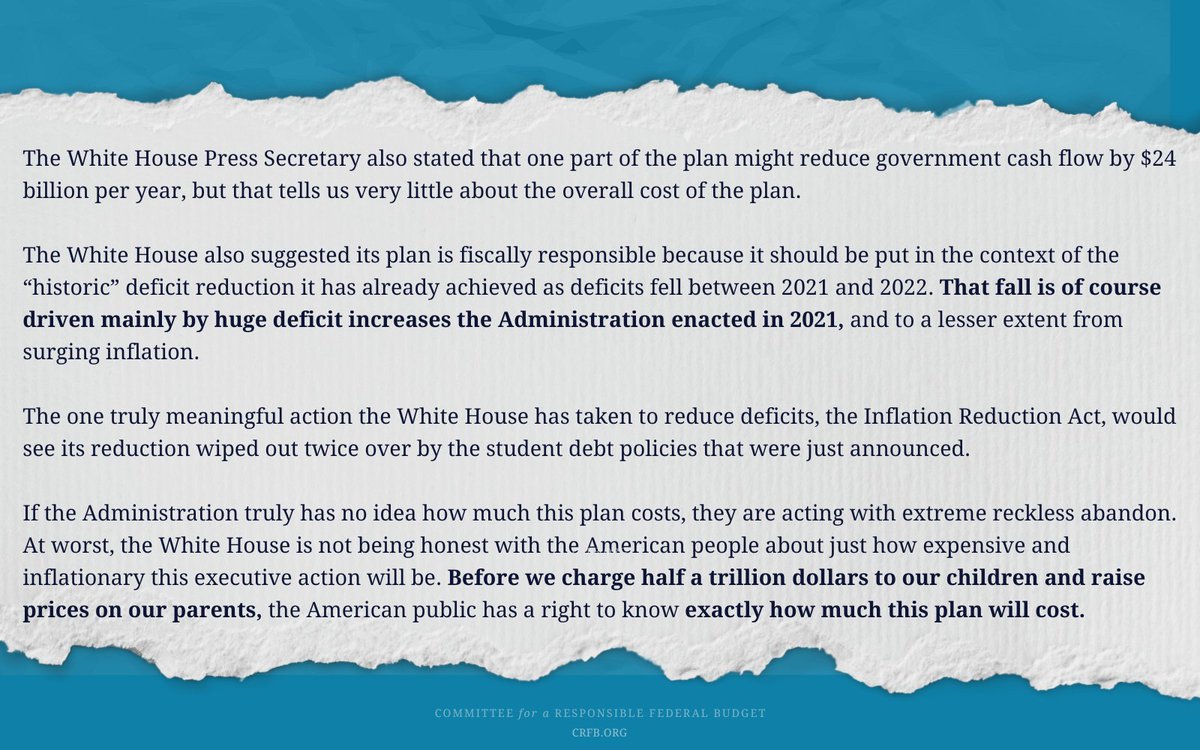NEW: The CBO update shows that the recent budget deal made a bad situation worse. From our statement: "The recent budget deal was a budget buster, and now we have further proof. Both parties took an already unsustainable situation and made it much worse." crfb.org/press-releases…
"Debt is now going to grow to almost the size of the economy within the decade. If Congress keeps extending tax cuts, debt will likely exceed the size of the economy within the decade."
"Between the budget deal, the tax cuts, and other recent unpaid-for legislation, policymakers have roughly doubled near-term deficits over just the past few years."
"Shame on them for not instead reducing projected debt to give us more room to fight the next recession and manage the aging of the population."
"As these new numbers come out, let’s hope at least the same lawmakers who voted for these reckless policies spare us the act of pretending they’re shocked and surprised by the dangerous path we are now on."
"Fortunately, it’s still not too late to make things right. As a first step, policymakers should pledge to pay for all extensions of existing policies and new legislation so we can put an end to this downward fiscal spiral."
"They should also redouble their efforts to control health care cost growth, restore Social Security solvency, and gradually bring revenue and spending more closely in line rather than further apart."
See our full statement crfb.org/press-releases…
See our full statement crfb.org/press-releases…
• • •
Missing some Tweet in this thread? You can try to
force a refresh















